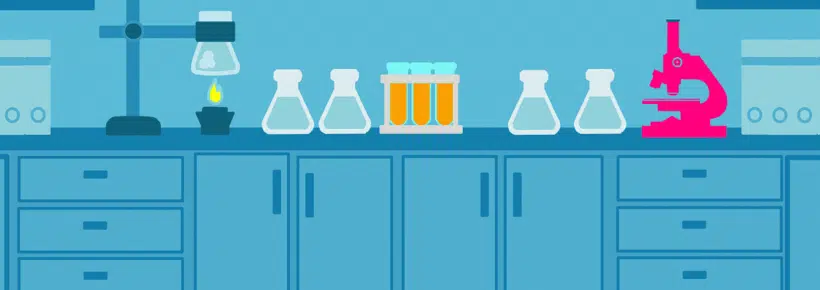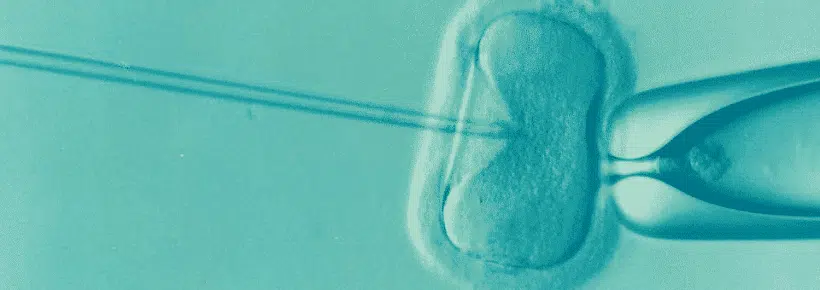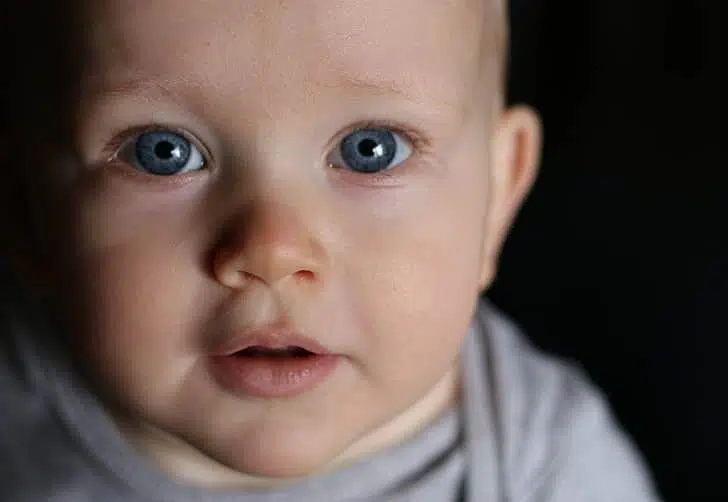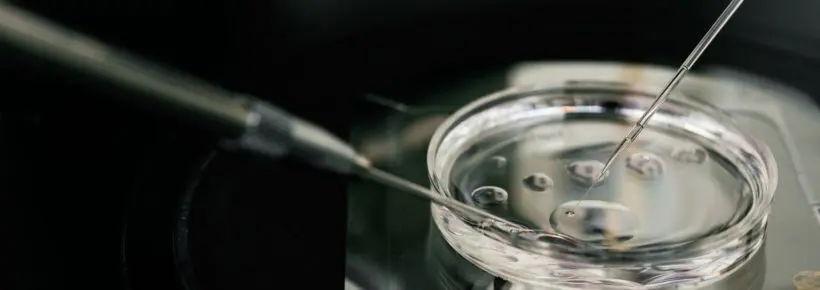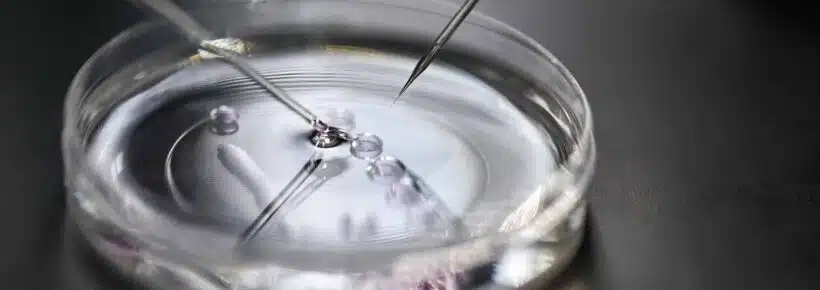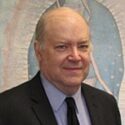Senator Brian Harradine: “How often has in‑vitro fertilization been undertaken on non‑human higher primates?”
Professor William Short: “It has not been undertaken on gorillas because gorillas are an endangered species.”
Senator Brian Harradine: “So you are able to do it on humans?”
Professor William Short: “We are not an endangered species.”1
The history of assisted reproductive technology is a story of an increasing commercialization of human beings, of children bought and sold.
The Precursor: Artificial Insemination
Artificial insemination (AI) is the most basic assisted reproductive technique. The sperm donor typically masturbates in order to collect semen, which is then introduced into the woman’s vagina by a catheter.
AI is usually classified as AI‑H (artificial insemination‑husband, or “homologous” insemination) or AI‑D (artificial insemination‑donor or “heterologous” insemination).
The first artificial insemination by donor (AID) procedure was performed in 1884, when Chester A. Arthur was President of the United States. A rich but infertile Philadelphia couple reasoned that there must be some way to “bypass” infertility, and so they asked for the assistance of their friend, medical school professor Dr. William Pancoast. The good doctor in turn asked the handsomest student in his class to contribute a sperm sample, and then injected it into the wife while she was under general anesthesia. She was not advised of the details of the procedure — but her husband was.2 As shown by this early example, AID constitutes what might properly be called “technological adultery.”
There are several other ethical problems inherent in the AI procedure. For example, a sperm donor can “contribute” three or four sperm samples a week, and there is no way to know whether he has fathered dozens or even hundreds of sons and daughters. This leads to obvious problems; it is quite possible that a man in a small- or medium-sized city may be the father of hundreds of children, some of whom may intermarry and in turn produce children, with all of the genetic problems that often follow.
The Catholic Church has addressed artificial insemination several times in very clear terms. Pope Pius XII saw the scientific signs of the times in 1951, and stated, “To reduce the common life of a husband and wife and the conjugal act to a mere organic function for the transmission of seed would be but to convert the domestic hearth, the family sanctuary, into a biological laboratory. Therefore … we expressly excluded artificial insemination in marriage.”3
Donum Vitae revisited this topic in 1987, stating that whenever an artificial means “facilitates the conjugal act or helps it to reach its natural objectives, it can be morally acceptable. If, on the other hand, the procedure were to replace the conjugal act, it is morally illicit [unacceptable]. Artificial insemination as a substitute for the conjugal act is prohibited.”4
With artificial insemination, we see the beginning of a slippery slope to the commoditization of human procreation.
In‑Vitro Fertilization (IVF)
The IVF Procedure
In‑vitro (literally, “in glass”) fertilization (IVF) is the beginning of a new human being outside the mother’s body, and is a natural successor to artificial insemination. The main difference between AI and IVF is that, in AI, only the biological father’s gametes are isolated from his body. In IVF, both the father’s and the mother’s gametes are isolated.
The first step in an IVF procedure is to obtain a healthy egg from the woman. A doctor does this during a laparoscopy, under general anesthesia, after the woman has taken drugs to cause her to release several ripe eggs at one time (“hyperovulation”). He inserts a laparoscope (a camera with a miniature flashlight on its head) into an incision near the woman’s navel. He locates several ripe eggs that are about to be released from the follicle and extracts them with an aspirating tube. Doctors using more advanced techniques use ultrasound and make a “band aid” incision under local anesthesia.
A technician places the retrieved eggs in a Petri dish filled with a nutrient solution and exposes them for several hours to a few drops of sperm. If the eggs are fertilized, he monitors them for proper growth. On the third or fourth day, (approximately the 8‑ or 16‑cell stage), the doctor inserts several embryos into the woman’s uterus with a catheter or tube which he passes through the cervix.5
Mad Scientists in Real Life
The invention of various assisted reproductive technologies has fired the imaginations of unscrupulous scientists — who believe that there should be no limits on their activities — for more than a century. As one example, members of the darker corners of the medical profession have long proposed the cross-breeding of various species, including humans and apes. One scientist specializing in IVF stated in 1984: “I can foresee the day when a human baby is born to a chimpanzee. That might happen within 20 years.”6
This scientist’s prediction was more half a century out of date. An actual human-ape hybridization was attempted in 1926 by the “Red Frankenstein,” artificial insemination expert Ilia Ivanov, whose misadventures seem lifted from the pages of a seedy science fiction pulp magazine.
Ivanov set out for French Guinea to undergo a government-sanctioned attempt to breed humans and apes, possibly for the purpose of creating super soldiers — what the London Sun referred to as “Stalin’s mutant ape army.” He also wanted to lend credence to the theory that human beings evolved from apes. Ivanov was already renowned for his work in breeding closely-related species, and had produced several hybrids, including the “zeedonk” (zebra-donkey) and “zubron” (bison-cow).
The Bolshevik government also saw Ivanov’s efforts as furthering its dreams of a Socialist paradise through a program of positive eugenics meant to breed out “backwards” and “anti-revolutionary” traits such as competitiveness, greed and the desire to own property. Thankfully, Ivanov never had the opportunity to inseminate women with ape gametes, because he was exiled to Kazakhstan during the 1930 purge of scientists and died soon after.
This and similar experiments early in the history of assisted reproduction caused both it and its parent science of eugenics to earn rather lurid reputations. However, both ARTs and eugenics emerged from the shadows with renewed vigor after the legalization of abortion in the United States in 1973.
Children Conceived through IVF
Louise Brown was born on July 25, 1978. She was the first baby conceived in a Petri dish to survive, and has been followed by more than six million other IVF babies worldwide, with about one‑third of them being born in the United States. Other leading IVF centers operate in England, France, Germany, Austria, Belgium and Australia.7
Doctor Robert Edwards and abortionist Patrick Steptoe, who produced Louise Brown, discarded 99.5% of the ova fertilized in their lab over a period of 12 years. In other words, they had failed in their first 200 attempts at transferring the embryo to the uterus.8
Steptoe’s IVF research was entirely financed by his very lucrative abortion practice, and this showed in his policies. He required Louise’s parents to sign a document agreeing to abort her if there was the slightest hint of an abnormality in her, so that the reputation of his new “science” would remain unsullied.9
It would be interesting to know how Louise would react to knowing the doctors would simply have disposed of her if she had been less than perfect ― or what she would think about the 200 embryos before her that had a chance at life but were discarded as mere garbage.
This eugenics-oriented attitude naturally influences latter‑day IVF clinics. For example, Noel Keane, director of the largest surrogate motherhood service in the world (New York’s Infertility Center), had his applicants for surrogate motherhood sign contracts stating that their children will be genetically tested and aborted if defective.10
Before IVF became widely practiced, Nobel Prize laureate James Watson had already stretched this “logic” to its natural conclusion. He asserted that all doctors who participate in IVF should be present at the birth of all of their babies so that they may “terminate the baby’s life should it come out grossly abnormal.”11
The science of ARTs advanced rapidly after the birth of Louise. Zoe Layland of Melbourne, Australia, became the first child conceived through IVF, then frozen, thawed, implanted and born on March 28, 1984. Her mother was superovulated and produced 11 eggs which were then fertilized. Ten of these were deliberately destroyed through selective abortion or died naturally.12
Zoe the “ice baby” was very lucky indeed to survive this artificial selection process. Most new human beings who undergo the in-vitro fertilization process do not survive the ordeal.
Conclusion
As this early history of assisted reproductive technology shows, the scientists who engineer these techniques have little respect for the lives of human beings in their earliest stages, or for the sacredness of the marital act. The miracle of human procreation has been turned into mere matter for experimentation.
As pro-lifers and Catholics, we have a duty to resist.
+ Endnotes
[1] From the transcript of the Australian Senate’s Select Committee hearings on the 1985 Human Embryo Experimentation Bill, reported by The Tablet, November 22, 1986.
[2] Robert Francoeur. Utopian Motherhood: New Trends in Human Reproduction. London: George Allen & Unwin, 1971, pages 11 to 13.
[3] Pope Pius XII. Address to the Italian Union of Midwives, October 21, 1951, text printed in The Catholic Mind (Volume 50, 1951), page 61.
[4] The document goes on to say:
Artificial insemination as a substitute for the conjugal act is prohibited by reason of the voluntarily achieved dissociation of the two meanings of the conjugal act. Masturbation, through which the sperm is normally obtained, is another sign of this dissociation: even when it is done for the purpose of procreation, the act remains deprived of its unitive meaning: “It lacks the sexual relationship called for by the moral order, namely the relationship which realizes ‘the full sense of mutual self‑giving and human procreation in the context of true love.'”
[5] Albert S. Moraczewski, O.P. “In Vitro Fertilization and Christian Marriage.” Also Eugene Diamond, M.D. “A Call for Moratorium on In Vitro Fertilization.” Both articles are in the November 1979 issue of Linacre Quarterly.
[6] IVF scientist, quoted in the Santa Cruz [California] Sentinel, September 28, 1984, page 47.
[7] The number of six million IVF babies is extrapolated from the numbers provided in the article.
[8] Eugene Diamond, M.D. “A Call for Moratorium on In Vitro Fertilization.” Linacre Quarterly, November 1979.
[9] Time Magazine, July 31, 1978.
[10] Claudia Wallis. “A Surrogate’s Story.” Time Magazine, September 10, 1984, page 51. This practice persists today.
[11] James Watson. “Child from the Laboratory.” Prism (American Medical Association), May 1973, Volume 1, Number 2, page 13.
[12] Claudia Wallis. “The New Origins of Life.” Time Magazine, September 10, 1984, page 40. Also Jo Wiles. “The Gift of Life.” Star World, April 24, 1986, pages 24 to 26. For an article written on Zoe’s 25th birthday, see Geoffrey Planer. “World’s First ‘Ice Baby’s’ 25th Birthday.” IVF Net, March 30, 2009.
Related Content
Dr. Brian Clowes has been HLI’s director of research since 1995 and is one of the most accomplished and respected intellectuals in the international pro-life movement. Best known as author of the most exhaustive pro-life informational resource volume The Facts of Life, and for his Pro-Life Basic Training Course, Brian is the author of nine books and over 500 scholarly and popular articles, and has traveled to 70 countries on six continents as a pro-life speaker, educator and trainer.



